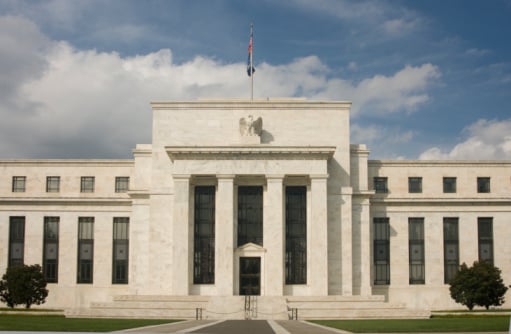No Interest Rate Hikes Until Late 2015: Chicago Fed’s Evans
September 6, 2013 by Paul Ausick
Evans has been a big supporter of the Fed’s quantitative easing (QE) and asset purchase programs. He proposed last year that the central bank adopt a “state-contingent policy” committing the Fed to its QE3 program as long as the unemployment rate remains above 7% and the medium-term expectation for inflation remained under 3%. In practice, the Fed has modified the “Evans rule” slightly, saying that it will keep the fed funds rate at zero at least until the unemployment rate reaches 6.5% and the medium-term inflation outlook remains below 2.5%.
In his remarks today, Evans addressed the questions of how long QE3 will last, what the Fed’s balance sheet will look like when easing finally ends and will the Fed ever be able to shrink its balance sheet. As to the first:
How long will QE3 last? It depends on the data. Of course, the person on the street would prefer a time, date and place. When, in calendar time, do I see these economic conditions being reached? For asset purchases, my current forecast has that occurring sometime in mid-2014. For the interest rate thresholds, my outlook is for the unemployment rate to be 6-1/2 percent sometime in early to mid-2015. But I also think there is a very good chance that at that time inflation will still be far enough below our 2 percent target that it will be appropriate to wait longer before increasing the funds rate; currently, I think it’s more likely that conditions for the first funds rate increase will be met in late 2015.
Evans said that the Fed balance sheet has grown from around $800 billion in 2007 to more than $3.5 trillion today. He expects the Fed balance sheet to reach $4 trillion by the time asset purchases end.
And as for shrinking that massive balance sheet:
Furthermore, when we ultimately end the current purchase program, we won’t be doing anything to reduce the balance sheet. Even though it will no longer be expanding, the balance sheet won’t actually begin to shrink until sometime much later when we make the decision to stop reinvesting maturing assets. Even then, it will only gradually decline as assets mature. As you may recall, Chairman Bernanke announced at his June press conference that it was most likely that the FOMC would simply let the MBS on our books run off and not actively sell them during the period of policy normalization. Accordingly, our expanded balance sheet will be providing accommodation for a long time after we have ceased adding assets to our portfolio.
Today’s relatively weak report on job additions in August in some ways reinforces Evans’s view that the United States still has some ways to go before the economy gathers its own head of steam.
Sponsored: Attention Savvy Investors: Speak to 3 Financial Experts – FREE
Ever wanted an extra set of eyes on an investment you’re considering? Now you can speak with up to 3 financial experts in your area for FREE. By simply
clicking here you can begin to match with financial professionals who can help guide you through the financial decisions you’re making. And the best part? The first conversation with them is free.
Click here to match with up to 3 financial pros who would be excited to help you make financial decisions.